Three Hudson Valley Board-and-Batten Cottages, Starting at $398K
If you’ve seen Grant Wood’s classic “American Gothic” painting then you’ve seen a board-and-batten house, even if you didn’t realize it.

If you’ve seen Grant Wood’s classic “American Gothic” painting then you’ve seen a board-and-batten house, even if you didn’t realize it. Just behind the pitchfork-holding gentleman is a stark white Gothic-style house with board-and-batten siding.
What exactly is board-and-batten? It’s simply a style of wood siding where the siding is placed vertically and in between each piece of board is a smaller vertical strip, called a batten. While the term can be used generically for the siding style, it is often used for a specific type of cottage that was popular in the U.S. from the late 1840s to mid 1860s.
That popularity was due partially to the styles promoted by landscape designer and architect Andrew Jackson Downing. Before dying tragically young in a steamship accident in 1852, Downing produced two hugely influential books on country houses. Downing, a native of Newburgh, advocated for “neat and picturesque” dwellings that were practical in design and suitable to the surrounding landscape.
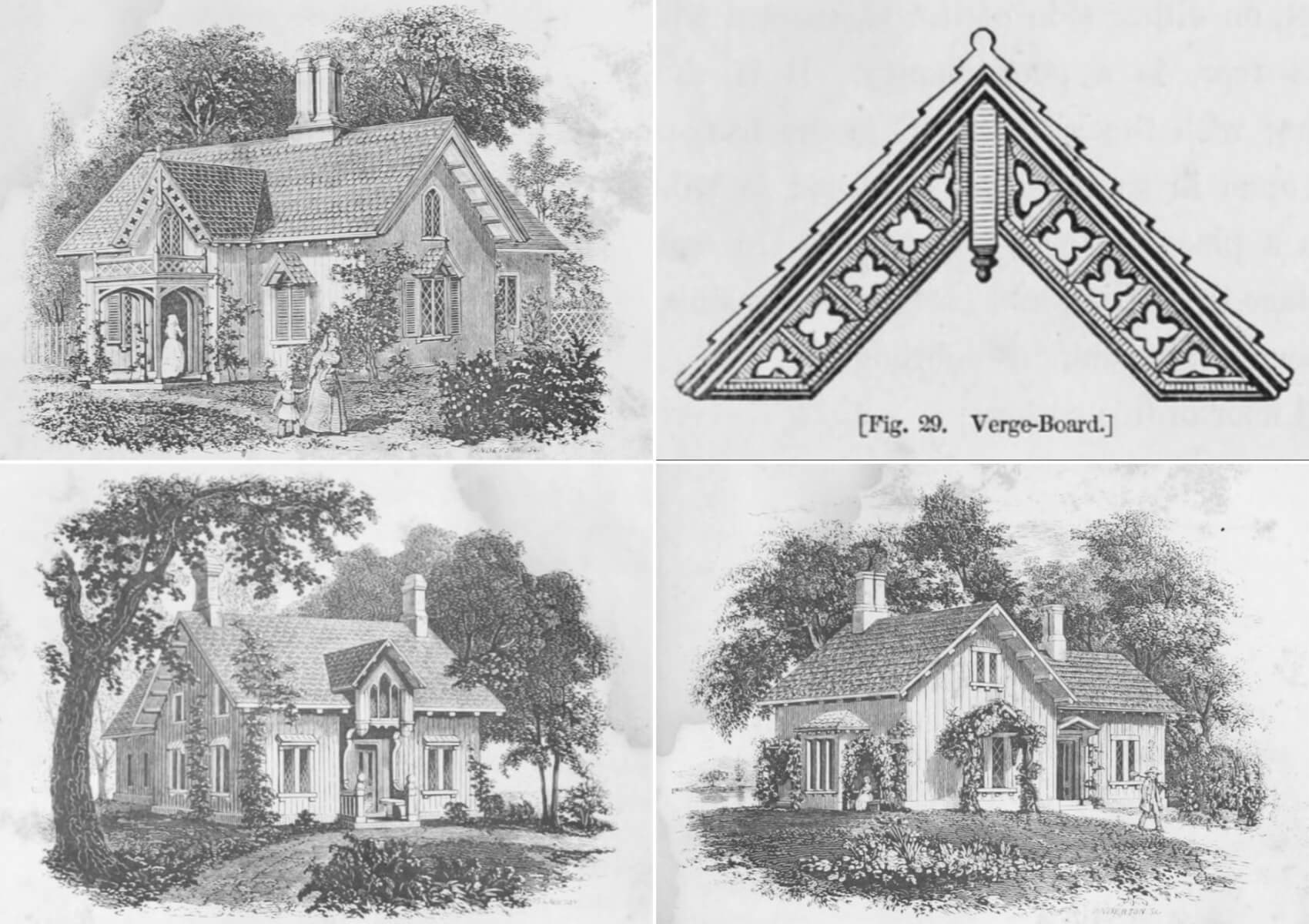
In his 1851 book “The Architecture of Country Houses,” Downing noted that when constructing a country cottage with wood siding, “We greatly prefer the vertical to the horizontal boarding, not only because it is more durable, but because it has an expression of strength and truthfulness which the other has not.” The book included designs for board-and-batten cottages with nods to the Gothic. In addition to the striking vertical siding, the houses often featured bargeboard trim in steeply peaked gables (Downing referred to it as verge-board), brackets, porticos and vernacular Gothic details. With the heavy reliance on wood and simplified Gothic style, the houses are often referred to as Carpenter’s Gothic.
We’ve found three board-and-batten cottages from the 1850s in Downing’s former Hudson Valley stomping grounds — although they are all across the river from Newburgh, on the eastern shores of the Hudson. All of the houses most likely have had some replacement work on their wooden exteriors, but still maintain the overall architectural character of the type of cottage Downing promoted.
Which would you choose?
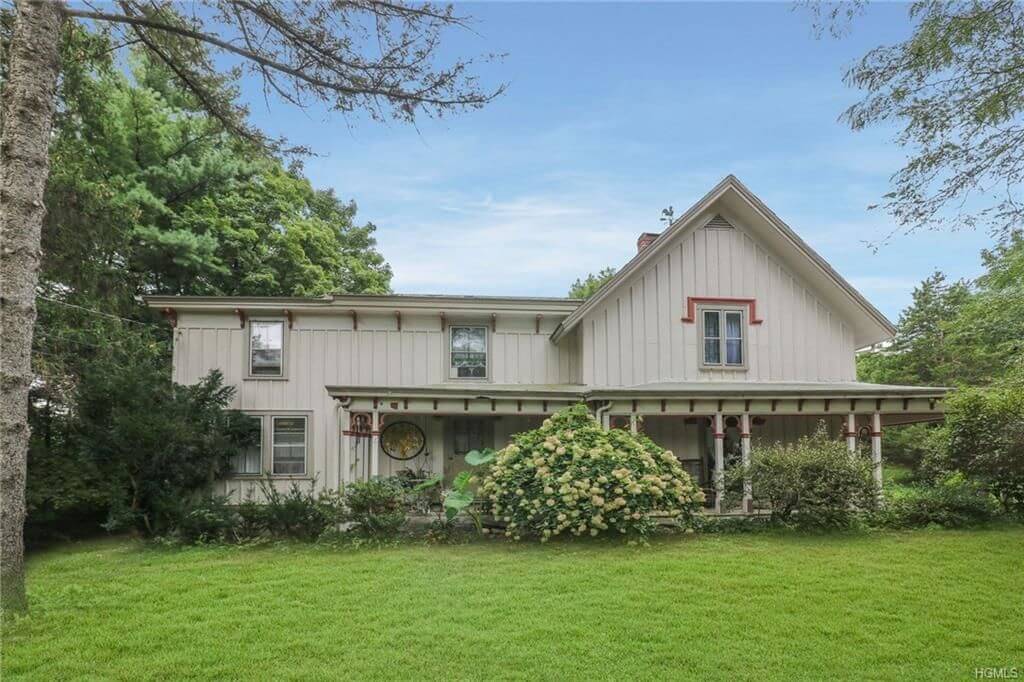
First up is the Parrish-Overocker House at 110 Overocker Road in Poughkeepsie. According to a survey of the historic architecture of Poughkeepsie Township, the house was built circa 1850 around the same time as a number of other Gothic style cottages popped up in the town. That peaked gable most likely would have once included some bargeboard trim.
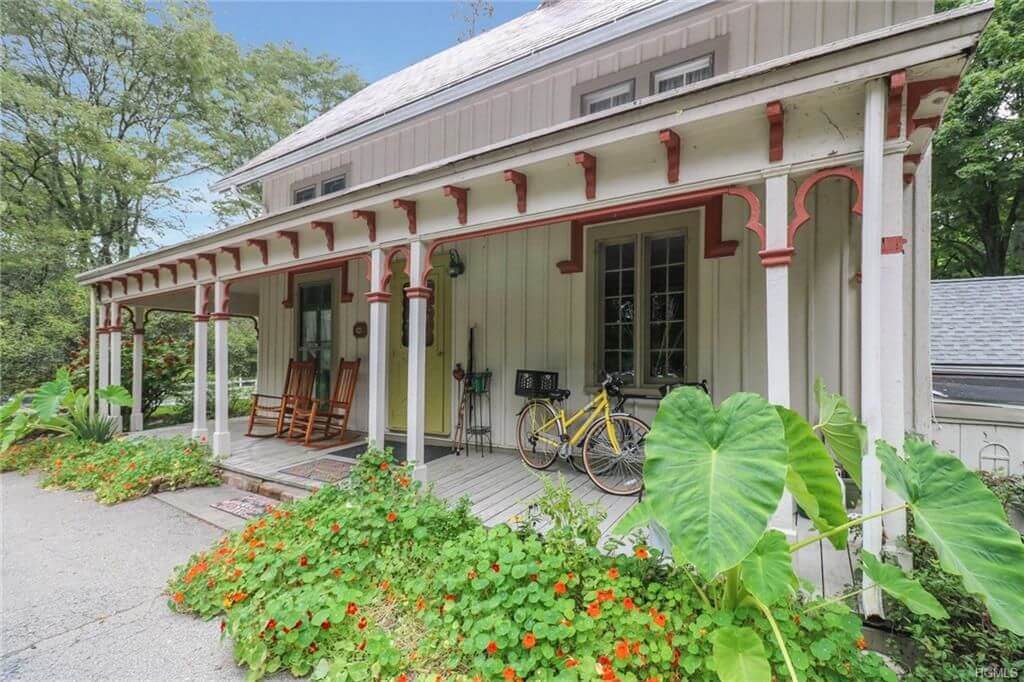
Downing would be pleased with the buff color of the house. In his 1842 book “Cottage Residences,” he bemoaned the popularity of stark white houses as “the glaring nature of this colour, when seen in contrast with the soft green of foliage, renders it extremely unpleasant to an eye attuned to harmony of colouring.” He recommended six shades of grey and brown as “highly suitable for the exterior of cottages and villas.”
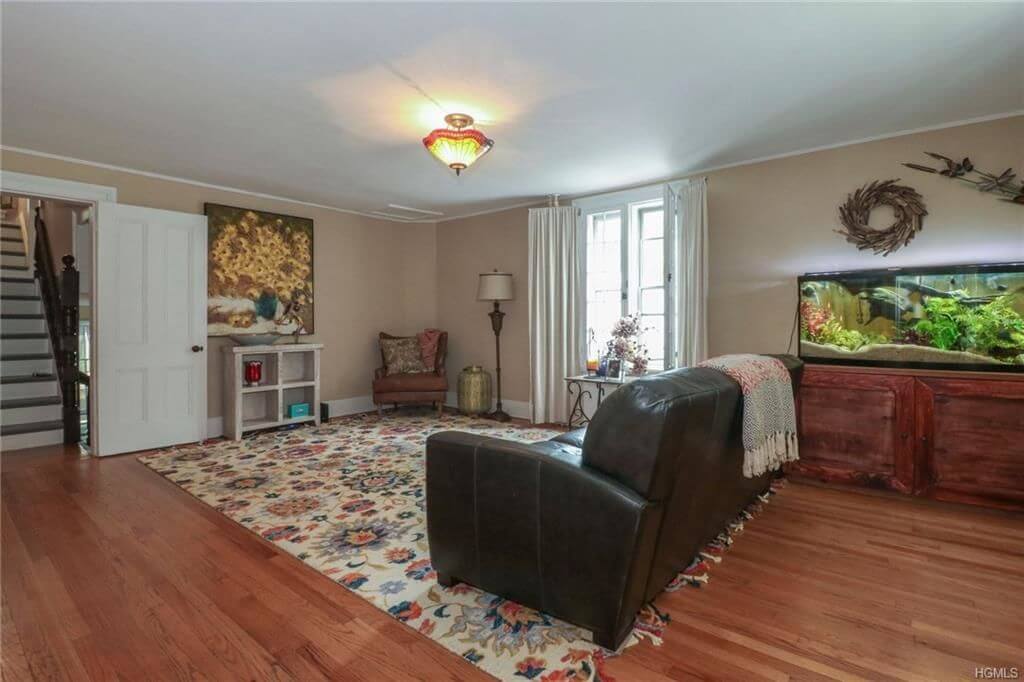
The house has almost 3,000 square feet of space with four bedrooms and 2.5 baths. There are a few glimpses of historic details, including some doors and trim and some wide planked floorboards on the upper story, but most of the rooms have had some modern renovations.
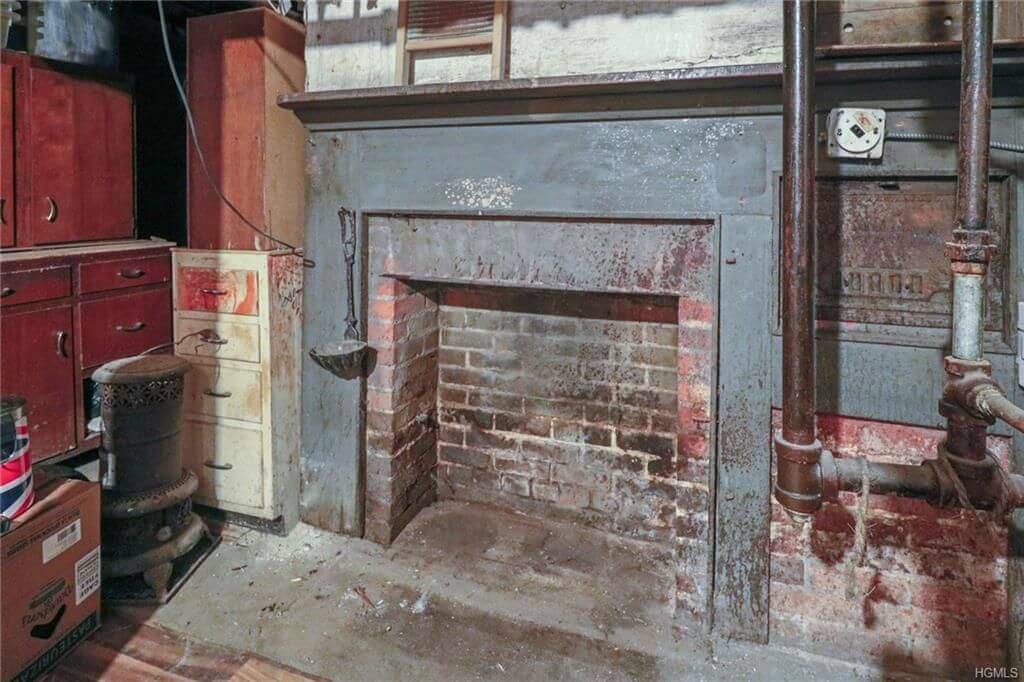
The listing does include a photo of one interesting vintage detail, an old mantel next to the, presumably, more modern boiler.
The house is just about a 10 minute walk to the Dutchess Rail Trail, a 13-mile trail from Hopewell Junction to the Walkway Over The Hudson State Historic Park.
The house is listed for $389,000 by Michelle Kenneally of Bhhs Hudson Valley Properties.
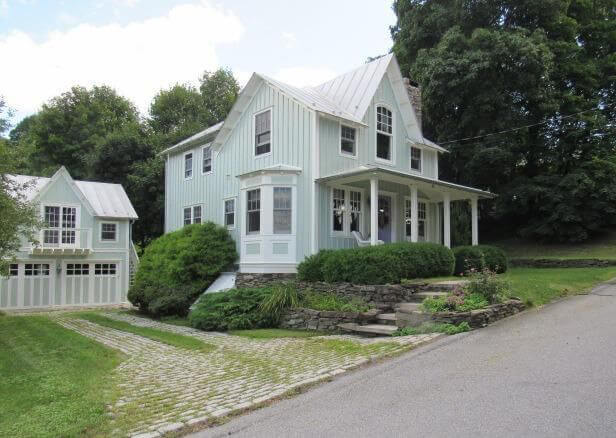
Next up is 47 Grinnell Street in Rhinecliff, a hamlet within the larger town of Rhinebeck. The petite cottage has the signature peaked gable with brackets, a bay window on the side and a deep porch. According to the listing it was built in the 1850s.
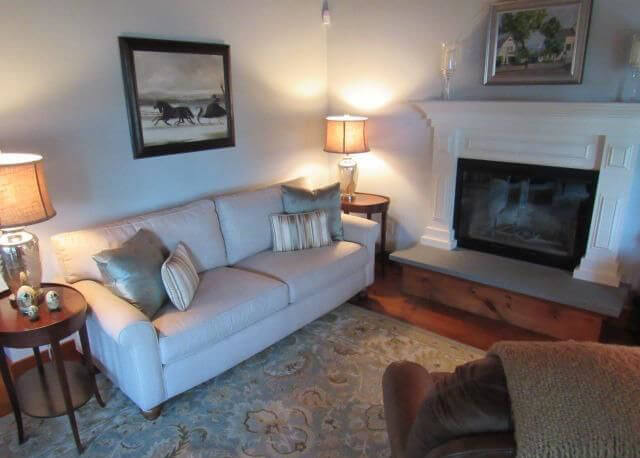
The smallest of the houses, it has two bedrooms and 1.5 baths in about 1,800 square feet. Like the previous house, it’s had some alterations on the interior but there are some glimpses of some wide planked floorboards.

The kitchen has a cottage feel, with vertical beadboard cabinets making a nod to the exterior board and batten. Outside, there’s a detached garage in a coordinating board and batten style that includes a large studio space on the second floor.
The house is just about a 10 minute walk to the Rhinecliff Station, with Amtrak access to the city. It’s also close to downtown Rhinebeck and a prime example of American Gothic style. The Henry Delamater House, now the Delamater Inn, was designed in 1844 by Downing’s friend and collaborator Alexander Jackson Davis.
The house at 47 Grinnell Street is listed for $975,000 by Thomas LeGrand with LeGrand Real Estate.

Finally, the most expensive of the bunch is the circa 1840s Peary Homestead at 340 Northern Boulevard in Germantown. It’s also the largest of the three with a roughly 3,000 square foot main house set on about three acres of land. On the outside, it’s got all the hallmarks of the style — a picturesque silhouette with a sharply peaked gable and the tell-tale siding style.
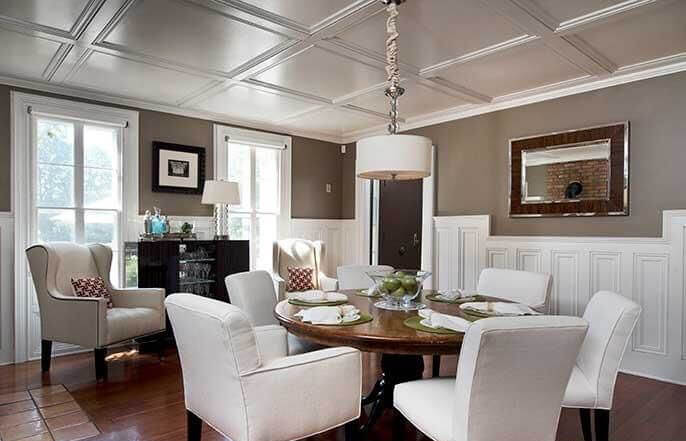
On the inside, the three bedroom and 2.5 bath house has seen some modern upgrades, including some custom millwork in the dining room and large contemporary kitchen.
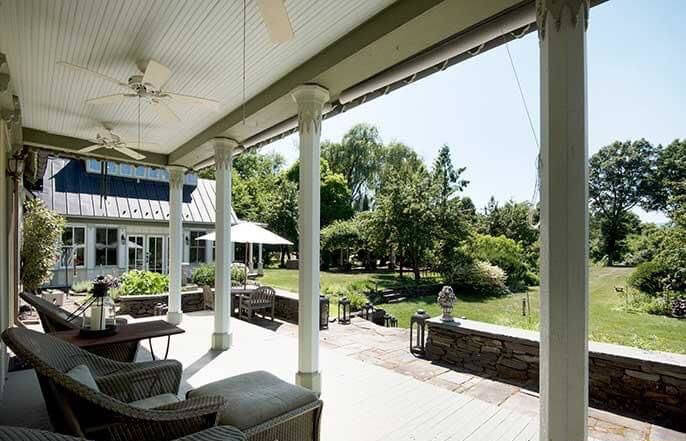
The property also includes extensive gardens, a lap pool and a carriage house with a guest suite.
It’s just a few minutes drive from the quaint downtown of Germantown with local favorite Otto’s Market, first established as a small grocery in the 1920s.
The house is listed for $1.4 million by Adelia Geiger of Gary DiMauro Real Estate.
Related Stories
- Artfully Restored Federal-Style Kinderhook Manse Can Be Yours for $1.25 Million
- Wallkill Stone House Asking $2.1 Million Paints Picture of Early New York Farm Life
- The Catskill Retreat of 20th Century Opera Diva Amelita Galli-Curci Can Be Yours for $3.25 Million
Email tips@brownstoner.com with further comments, questions or tips. Follow Brownstoner on Twitter and Instagram, and like us on Facebook.






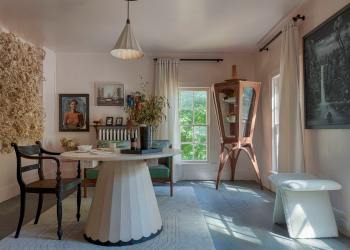


What's Your Take? Leave a Comment